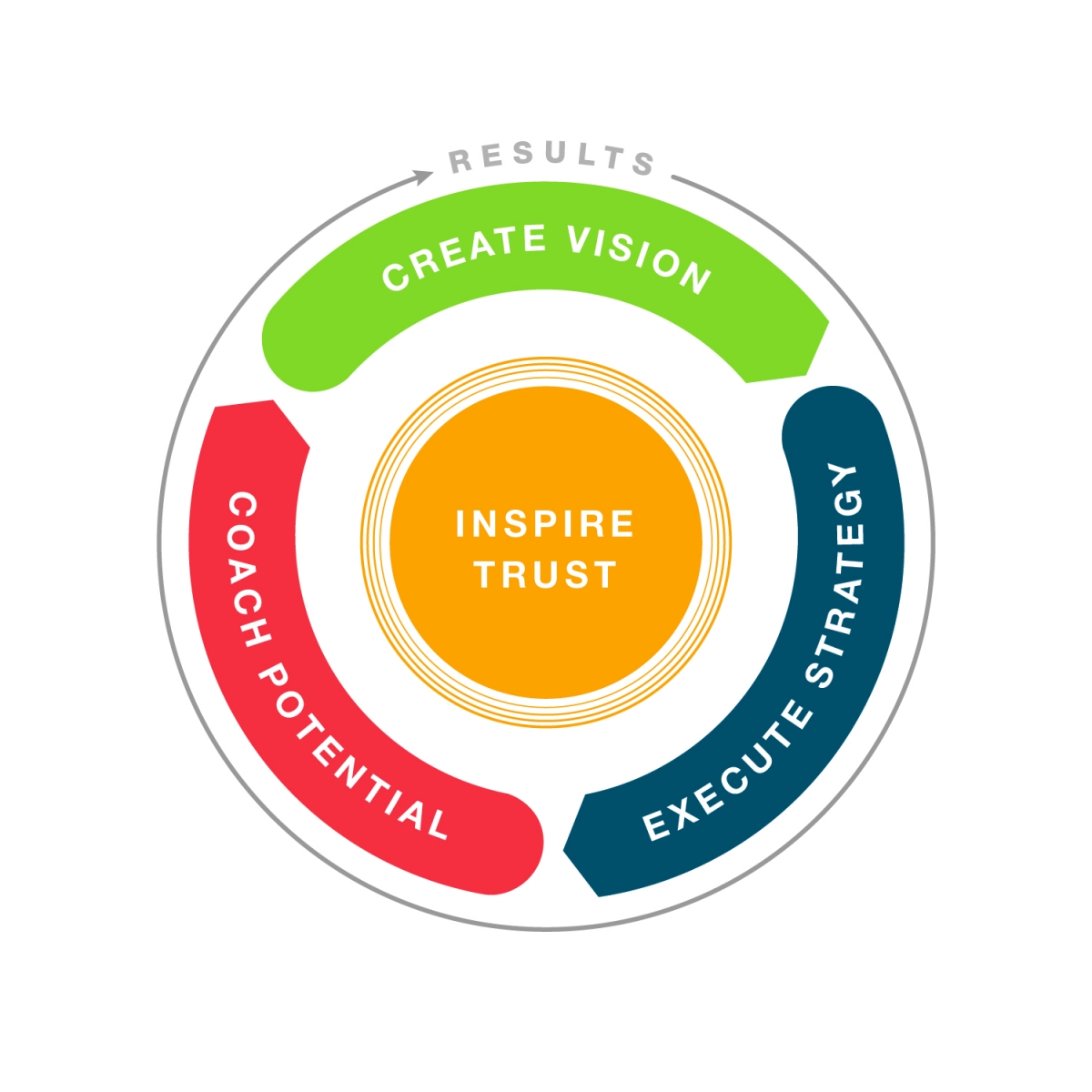“Change is not merely necessary to life—it is life.” —Alvin Toffler, author of “Future Shock”
Change is a fact of life, pervasive and persistent, as well as frustrating, unsettling, and widely resisted. As its pace continues to accelerate, change management initiatives are challenged not only to succeed, but to succeed now.
In a fast-paced, dynamic environment, companies must either disrupt or be disrupted. “The top 10 revenue-generating companies in 2008 were completely different from those in 2018, with the exception of Microsoft,” points out innovation consultant Juliana Stancampiano, CEO of Oxygen Experience. Between 2008 and 2018, “Microsoft made huge changes.” It replaced CEO Steve Ballmer with Satya Nadella, who pursued new concepts such as artificial intelligence and expanded Microsoft’s commitment to open source. Consequently, Microsoft’s market cap increased by $250 billion in just a few years.
The health-care industry is another case in point. The entire industry is being disrupted as decades-old reimbursement and practice models are replaced by a patient-centric model that emphasizes patient experience and outcomes. “The successful health-care organizations are willing to take calculated risks,” says Paul W.H. Bohne, managing partner and Healthcare Practice leader for executive search firm Witt/Kieffer. “Successful health-care providers are trying new things and are willing to stop an initiative if it isn’t working.”
Are You Ready for Change?
Tasked with helping organizations change, Learning and Development (L&D) leaders need to reassess everything. Their organization’s leadership skills, for example, may need updating. In a world of relentless change and constant distractions, Stancampiano says, “we need strong leaders who are clear and specific about what to do to drive success.” Facilitated discussions can help leadership dig deep to identify its true objectives.
When one accounting firm wanted to move from a top-down culture to a self-driven, empowered culture, corporate anthropologist Andrea Simon, CEO of Simon Associates Management Consultants, asked the leadership to tell a story about the culture now and to tell another story about what it wanted the culture to become. She asks for stories because “we may speak the same language, but we interpret it differently. The firm wanted an empowered culture, but what did ‘empowered’ mean to its leaders?”
The stories illustrated the goals and helped identify the gaps. With that, the organization was able to create a series of small wins. There was iterative development for cultural change. Just as for products, the changes were tested on a subset of customers, analyzed, refined, and tested again on a different set of customers. The process is repeated until the changes are perfected and ingrained in the workforce.
As you’re implementing and testing changes, be aware of any culture misalignments in the organization’s systems, processes, and infrastructure. Misalignments within the organizational structure are a major stumbling block to change, Stancampiano says. “For example, we all can relate to the value of teams versus individuals, and have conducted loads of training around effective collaboration. Yet if individuals are rated against their peers, they weigh the relative value of collaborating versus ‘knocking it out of the park’ themselves,” which often deters collaboration.
When introducing the change initiative to employees, make certain the plan is clear and specific.
“Determine the messaging you need to get out, and tie it to the business at the individual level,” Stancampiano elaborates. “Avoid passive statements and buzzwords. Instead, tell employees what they need to do differently today to make the desired changes. Be really specific.” If you do this, she says, the plan will be applicable and easy for front-line executives and their employees to remember and implement. Given their competing priorities and limited bandwidth, clarity is vital.
Engaging stakeholders is another obvious prerequisite for success, but here, often, is where organizations fall short. “Many organizations have good ideas but fail because the methods to engage stakeholders weren’t properly vetted,” Bohne points out.
Enlisting others—including the cynics— to discuss the planned changes early on is likewise invaluable. “You may not transform naysayers into champions, but you might change them into engaged owners of an idea, and that helps drive change,” he says.
To do this, you need to understand the reason for their negativity. “Recognize and talk through the cultural, political, or resources barriers, and identify potential solutions. I see so many clients whose ideas stalled because they didn’t talk through these issues at the outset,” Bohne notes.
Cross-functional teams are especially powerful at this point. Simon also recommends deploying cross-functional teams to plan the changes. “With a team, members are engaged in the research and are empowered to develop and test solutions,” she says. That causes experiential learning, which is more effective than merely responsive learning.
The Brain Fights Change
Resistance to change is hardwired into our species, so changing behaviors takes more than an intellectual commitment. It takes time and reinforcement.
“As humans, we spend our first 30 years organizing our minds, mapping our perceptional realities,” notes corporate anthropologist Simon. “It’s an efficient survival methodology.” For the rest of our lives, we gauge our experiences against this map of what we understand to be right. Then L&D introduces something new.
Simon uses the analogy of theater, in which learners play the role of Macbeth very well. Then they’re asked to play Hamlet. They have limited rehearsal time, but are expected to be able to step into that new role—maybe not right away, but at some point. “They may step in successfully while the training is fresh, but as time passes, their habits will fight this. Eventually, they go back to what they know.” This isn’t a conscious decision, she stresses.
Working in teams can help ingrain desired changes. “Team members encourage us and make it more difficult to revert to old habits,” Simon notes. “Teams can be the difference between achieving the desired change and falling by the wayside.”
Build a Culture of Learning
For L&D to help change initiatives succeed, first and foremost, foster a culture of learning. “L&D should be embedded with the operational aspects of the company. Simply orbiting operations isn’t enough,” Bohne insists. “Change takes root fastest in organizations that value continual learning.
“L&D can have an integral role in identifying the culture and leadership competencies that support accelerated change,” he continues. “Immerse L&D in the organization’s strategic and operating priorities, so you can provide practical, meaningful programs that support change.”
That said, Stancampiano cautions, “don’t talk about competency models. Talk about what drives business outcomes.”
By doing that, you can drive change.
4 Hurdles That Thwart Change
Change initiatives all have four common challenges:
- COGNITIVE: “What do you mean, exactly?”
- MOTIVATIONAL: “Do I really need to change?”
- RESOURCES: “We don’t have the resources.”
- POLITICAL: “Our informal leaders aren’t onboard.”
The 4 Essential Roles of Leadership in the Face of Constant Change
By Patrick Leddin, Ph.D., Associate Professor, Vanderbilt University, Managerial Studies Program, and Senior Consultant, FranklinCovey
“The only thing that is constant in life is change.” —Heraclitus, Greek Philosopher (2,000-plus years ago)
At this very moment, you likely are experiencing sweeping changes that impact your entire organization (e.g., a large-scale technology implementation) and smaller ones felt mainly by your team (e.g., a colleague’s departure). Moreover, the same would have been true five years ago, and likely will be true five years from now.
Change is a constant. Change is relentless. Heraclitus was right.
Over the last 30-plus years, FranklinCovey (http://www.franklincovey.com) has worked with hundreds of thousands of leaders in more than 140 countries. We have watched organizations both flourish and flounder in the face of tumultuous change. Experience has taught us that to thrive in change, organizations must have great leaders who fulfill four essential roles.

Essential Role #1: Inspire Trust
Trust is foundational. In times of turmoil, people want someone they can trust. They want to know that when things get tough or mistakes happen, they have a leader with the character and competence to support them, own the situation, and work to make it better.
Essential Role #2: Create Vision
People can overcome any obstacle, challenge, or problem, especially if they know why the issue matters and where they are going. Great leaders provide the clarity people need and a vision to make the change worth the effort.
Essential Role #3: Execute Strategy
Great leaders know there is a huge difference between playing to win and playing not to lose. In the latter, people merely want to make it through the day—they endure the change. In the former, people are engaged and excited. Change becomes another mountain to climb, as opposed to an object to avoid. Great leaders put systems in place to enable winning in the face of relentless change.
Essential Role #4: Coach Potential
Great leaders know they don’t have to do everything for or to their people; they simply need to coach potential. This mindset causes leaders to listen—really listen—to ask great questions, and to acknowledge the skills and ability within each of us. Doing so unleashes creative thinking and develops people to their highest potential.
Final Thought
Ten years from now, most people won’t remember the details of the change you are facing, but they will remember what it felt like to work for a great leader. They will remember what it was like to have a leader who inspired trust, created vision, executed strategy, and coached them to their greatest potential.
For more information, visit: The 4 Essential Roles of Leadership (https://www.franklincovey.com/Solutions/4essentialroles.html)
How to Rock a Change Initiative
By Brant Menswar, keynote speaker, author, and musician, and Jim Trick, certified life coach, author, speaker, and folk musician; they are co-authors of “Rock ‘N’ Roll With It: Overcoming the Challenge of Change” (https://www.changewhatspossible.com)
When looking at why change initiatives fail, we can learn a lot from the world of music. When a musician hasn’t produced the best he or she has to offer during the recording process, you often will hear the phrase, “Fix it in the mix,” tossed around the studio. The idea is that the producer somehow will make it better while mixing the album after all the tracks are recorded. What actually happens is a painstaking process of cutting up takes into tiny parts and piecing them together to “create” a better product then what actually was recorded. This is a time- and money-consuming process that never produces the “lightning in a bottle” moment everyone desires.
Leaders spend far too much time “fixing it in the mix” and not nearly enough time demanding the type of quality needed to produce great results. Getting the best out of someone requires more time in “pre-production.” Pre-production is what happens months before ever stepping into the studio. This is where you answer the “who, what, where, when, and why” of the record.
When trying to navigate change, we often are so focused on the “how” that we don’t do the crucial advance work needed to produce the desired results. To successfully rock a change initiative, focus on the following:
Identifying Core Values
As a leader, helping your people identify their core values has arguably the greatest impact on the work at hand. When someone owns the four or five core values that matter most to them, it enables them to:
- Identify misalignment much faster
- Make better decisions
- Bring meaningful solutions to the table
Identifying core values also prevents you from becoming anyone’s personal accountability officer. When we know what matters most to us, we can hold ourselves accountable.
Navigating Feelings in the Moment
Feelings are powerful motivators for making decisions. By allowing ourselves to see how we “feel” about the change, we are able to honestly identify our level of commitment. Change is easy when our feelings are aligned with our values. It’s the common tug of war between the two that makes change often feel impossible and challenges our commitment to the initiative in play.
By focusing on helping our people understand their feelings and empowering them to align their core values, we amplify their commitment and give our change initiatives the best chance of succeeding.


